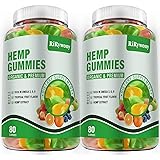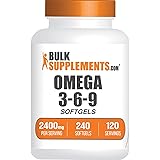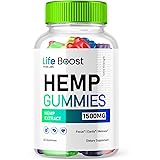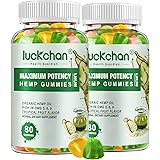Have you ever wondered if your body is subtly trying to communicate with you about your health? As the video above delves into, understanding what your body might be telling you about potential health concerns, such as high cholesterol symptoms, is crucial for proactive well-being. While high cholesterol is often referred to as a “silent killer” due to its lack of overt signs, a deeper understanding reveals that complications arising from it can manifest in discernible ways. However, recognizing these often-indirect signals is key to early intervention and safeguarding your cardiovascular health.
What Exactly is High Cholesterol? Beyond the Basics
Before exploring the high cholesterol symptoms that might emerge, it is important to first grasp what cholesterol truly is. Cholesterol, a waxy, fat-like substance, is naturally produced by the liver and is essential for forming healthy cells. However, its type and quantity are critical. Often, when discussions turn to cholesterol, two primary types are referenced: low-density lipoprotein (LDL) and high-density lipoprotein (HDL).
LDL cholesterol is widely recognized as the “bad” cholesterol. When levels of LDL become elevated, this substance can contribute to the buildup of fatty deposits, or plaque, within the arteries. On the other hand, HDL cholesterol, known as the “good” cholesterol, aids in transporting excess cholesterol back to the liver for removal from the body. While a healthy balance is naturally maintained in many individuals, an imbalance, particularly an abundance of LDL, is often indicative of increased health risks. For instance, data from the Centers for Disease Control and Prevention (CDC) indicates that approximately 93 million U.S. adults aged 20 or older have total cholesterol levels of 200 mg/dL or higher, with a significant portion experiencing elevated LDL levels.
The Silent Threat: Why High Cholesterol Often Goes Undetected
One of the most challenging aspects of high cholesterol is its notorious lack of direct symptoms. Unlike conditions that announce their presence with immediate pain or discomfort, high cholesterol typically provides no warning signs in its early stages. This is precisely why it is often labeled a “silent killer.” The danger is not the cholesterol itself, but rather the long-term damage it can cause to the arterial walls, a process known as atherosclerosis.
Atherosclerosis involves the gradual hardening and narrowing of the arteries as plaque accumulates. This buildup restricts blood flow to vital organs, including the heart and brain. Despite the significant internal damage being caused, individuals might remain entirely unaware until a critical event occurs. Studies have shown that a substantial percentage of individuals with elevated cholesterol are only diagnosed during routine screenings or, regrettably, after experiencing a heart attack or stroke. A 2020 study published in the Journal of the American Medical Association (JAMA) highlighted that nearly one-third of adults with high cholesterol were unaware of their condition prior to a health event, underscoring the silent nature of this threat.
Recognizing the Subtle Signs: What Your Body Might Be Telling You
While high cholesterol itself typically presents no specific symptoms, the complications stemming from atherosclerosis can manifest in various ways throughout the body. These are not direct symptoms of high cholesterol levels, but rather indicators of the damage being inflicted on your arteries. Therefore, understanding these subtle clues is paramount.
Peripheral Artery Disease (PAD) Related Symptoms
When plaque buildup restricts blood flow to the arteries in the legs and feet, peripheral artery disease (PAD) can develop. The symptoms of PAD, which can be linked to high cholesterol, might include:
- Leg Pain (Claudication): This is often experienced as cramping, aching, or fatigue in the legs, calves, or buttocks during physical activity like walking. However, the pain typically subsides with rest. A review in the American Heart Journal noted that claudication affects approximately 1-2% of the general population aged 60 and above, with high cholesterol being a significant contributing factor.
- Numbness or Weakness in Legs/Feet: A persistent tingling, numbness, or weakness in the lower extremities, even at rest, could indicate poor circulation.
- Slow-Healing Sores: Wounds or sores on the feet or legs that heal slowly or not at all are a critical sign of insufficient blood supply.
- Skin Changes: The skin on the legs or feet might appear shiny, pale, or bluish. Hair loss on the legs or brittle toenails can also be observed.
- Coolness: One leg or foot might feel significantly cooler than the other, particularly when compared to the corresponding limb.
Coronary Artery Disease (CAD) Related Symptoms
When the arteries supplying blood to the heart become narrowed by plaque, it leads to coronary artery disease (CAD). While many individuals may not experience symptoms until the disease is advanced, these can be significant:
- Angina (Chest Pain): This is often described as pressure, tightness, or a squeezing sensation in the chest. It might be triggered by physical exertion or emotional stress and can radiate to the arm, neck, jaw, or back. Studies by the National Heart, Lung, and Blood Institute suggest that angina is a primary symptom in over 50% of CAD diagnoses.
- Shortness of Breath: Reduced blood flow to the heart can make it difficult for the heart to pump efficiently, leading to breathlessness, particularly during activity.
- Fatigue: Persistent and unexplained tiredness can be a symptom of CAD, as the heart struggles to supply adequate oxygenated blood to the body.
Stroke or Transient Ischemic Attack (TIA) Related Symptoms
If plaque breaks off and travels to the brain, or if arteries leading to the brain become severely narrowed, it can result in a stroke or a transient ischemic attack (TIA – often called a “mini-stroke”). These are medical emergencies requiring immediate attention:
- Sudden Numbness or Weakness: Typically affecting one side of the body, this can present as numbness or weakness in the face, arm, or leg.
- Vision Problems: Blurred vision, double vision, or sudden loss of vision in one or both eyes can be a sign.
- Dizziness and Loss of Balance: Sudden problems with walking, coordination, or unexplained dizziness can occur.
- Speech Difficulties: Slurred speech, trouble understanding speech, or difficulty finding words might indicate a problem.
Visible, Though Rare, Signs
In some cases, extremely high cholesterol levels, often due to genetic conditions, can lead to visible manifestations:
- Xanthomas: These are fatty deposits that appear as yellowish bumps on the skin, often found on the elbows, knees, buttocks, or tendons (e.g., Achilles tendon).
- Xanthelasma: These are yellowish patches or plaques that form around the eyelids. While they can be a sign of high cholesterol, they are also observed in individuals with normal cholesterol levels. Research published in the British Medical Journal in 2017 found that while Xanthelasma are not exclusively linked to high cholesterol, a significant proportion of those with the condition also presented with elevated lipid profiles.
- Arcus Senilis: A grayish-white arc or ring around the cornea of the eye. While common with aging, when observed in individuals under 40, it can be an indicator of significantly high cholesterol.
Understanding Your Risk: Key Factors Contributing to High Cholesterol
While the focus is often on high cholesterol symptoms, it is equally important to understand the factors that elevate one’s risk of developing the condition in the first place. Several elements contribute to increased cholesterol levels, and many of these can be managed or modified.
Genetics play a significant role; if high cholesterol runs in your family, you may be predisposed to it, even with a healthy lifestyle. However, lifestyle choices are often primary drivers. A diet rich in saturated and trans fats, commonly found in processed foods, red meat, and some dairy products, can directly increase LDL cholesterol. Conversely, insufficient physical activity contributes to lower HDL (good) cholesterol and can lead to weight gain. Obesity, particularly abdominal obesity, is strongly associated with higher LDL and lower HDL levels, further escalating the risk. According to a 2021 report from the American Heart Association, overweight and obese individuals are 70% more likely to develop high cholesterol compared to those with a healthy weight.
Smoking is another potent risk factor, as it damages blood vessel walls, making them more prone to plaque buildup, and can also lower HDL cholesterol. Age and sex also factor in; as individuals age, cholesterol levels tend to rise. Before menopause, women often have lower total cholesterol levels than men, but after menopause, women’s LDL levels tend to increase. Furthermore, pre-existing conditions like type 2 diabetes and chronic kidney disease are known to negatively impact cholesterol metabolism, often leading to a harmful lipid profile. Each of these factors, individually or in combination, increases the likelihood of developing high cholesterol and the associated complications that might eventually present with observable signs.
The Importance of Regular Screening and Early Detection
Given the “silent” nature of high cholesterol, regular screening is not just recommended, but essential for early detection. A simple blood test, known as a lipid panel, can measure your total cholesterol, LDL, HDL, and triglycerides. This test is typically performed after a 9-12 hour fast to ensure accurate results. The American Heart Association recommends that adults aged 20 or older have their cholesterol checked every 4 to 6 years if their risk is low. However, more frequent screenings may be advised for individuals with existing risk factors or a family history of heart disease.
The proactive identification of high cholesterol through screening allows for timely intervention, often before any high cholesterol symptoms of complications begin to manifest. For instance, a meta-analysis of multiple population studies indicated that widespread cholesterol screening and subsequent management programs have been associated with a 15-20% reduction in cardiovascular disease mortality rates over the past two decades. Early detection empowers individuals and their healthcare providers to implement lifestyle changes or medical treatments, significantly lowering the risk of developing severe health issues like heart attacks and strokes.
Taking Control: Managing and Preventing High Cholesterol
The good news is that high cholesterol is often manageable and, in many cases, preventable through a combination of lifestyle modifications and, when necessary, medication. Taking control of your cholesterol levels is a critical step in safeguarding your overall cardiovascular health, regardless of whether any subtle high cholesterol symptoms have been observed.
Dietary changes are frequently among the first lines of defense. Emphasizing foods rich in soluble fiber, such as oats, barley, fruits, and vegetables, can help reduce LDL cholesterol. Incorporating sources of omega-3 fatty acids, found in fatty fish like salmon and flaxseeds, is also beneficial. Conversely, limiting saturated and trans fats, often present in red and processed meats, fried foods, and certain baked goods, is paramount. Research published in the journal Circulation revealed that dietary interventions focused on reducing saturated fats and increasing soluble fiber can lead to an average 5-10% decrease in LDL cholesterol within just a few months. Regular physical activity, aiming for at least 150 minutes of moderate-intensity exercise per week, has been shown to raise HDL cholesterol while lowering LDL and triglycerides. Maintaining a healthy weight further contributes to a favorable lipid profile, with studies indicating that even a modest weight loss of 5-10% can significantly improve cholesterol levels.
For individuals who smoke, cessation is one of the most impactful steps that can be taken, as it rapidly improves HDL cholesterol levels and reduces arterial damage. However, when lifestyle adjustments alone are insufficient, medical intervention may be necessary. Medications such as statins are frequently prescribed to effectively lower cholesterol levels, significantly reducing the risk of heart attack and stroke. It is often a collaborative effort between the individual and their healthcare provider to determine the most effective strategy for managing and preventing high cholesterol, ensuring a proactive approach to long-term health.











